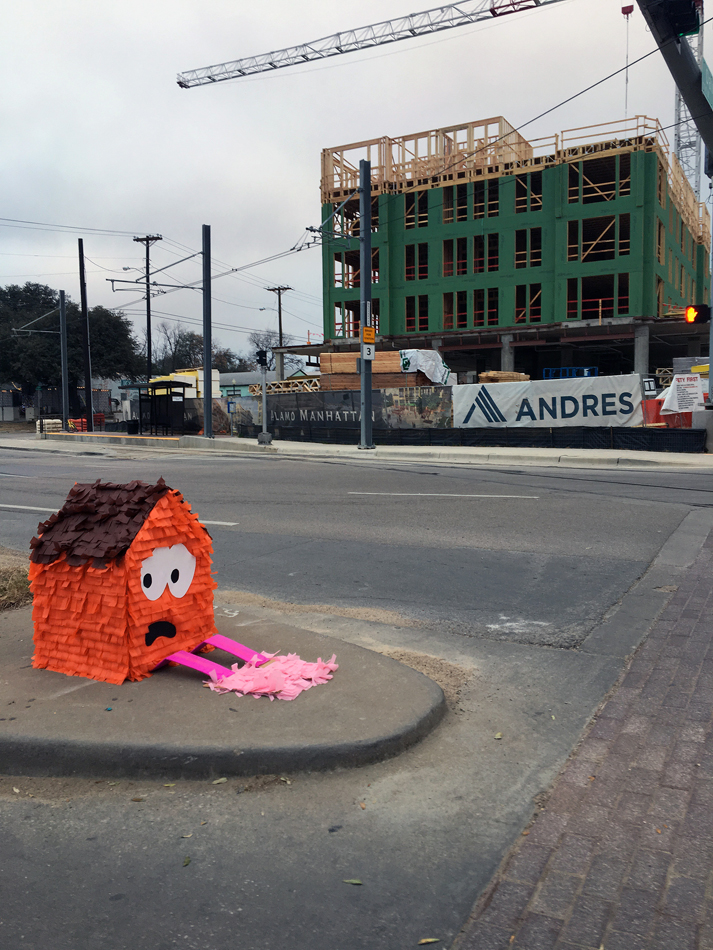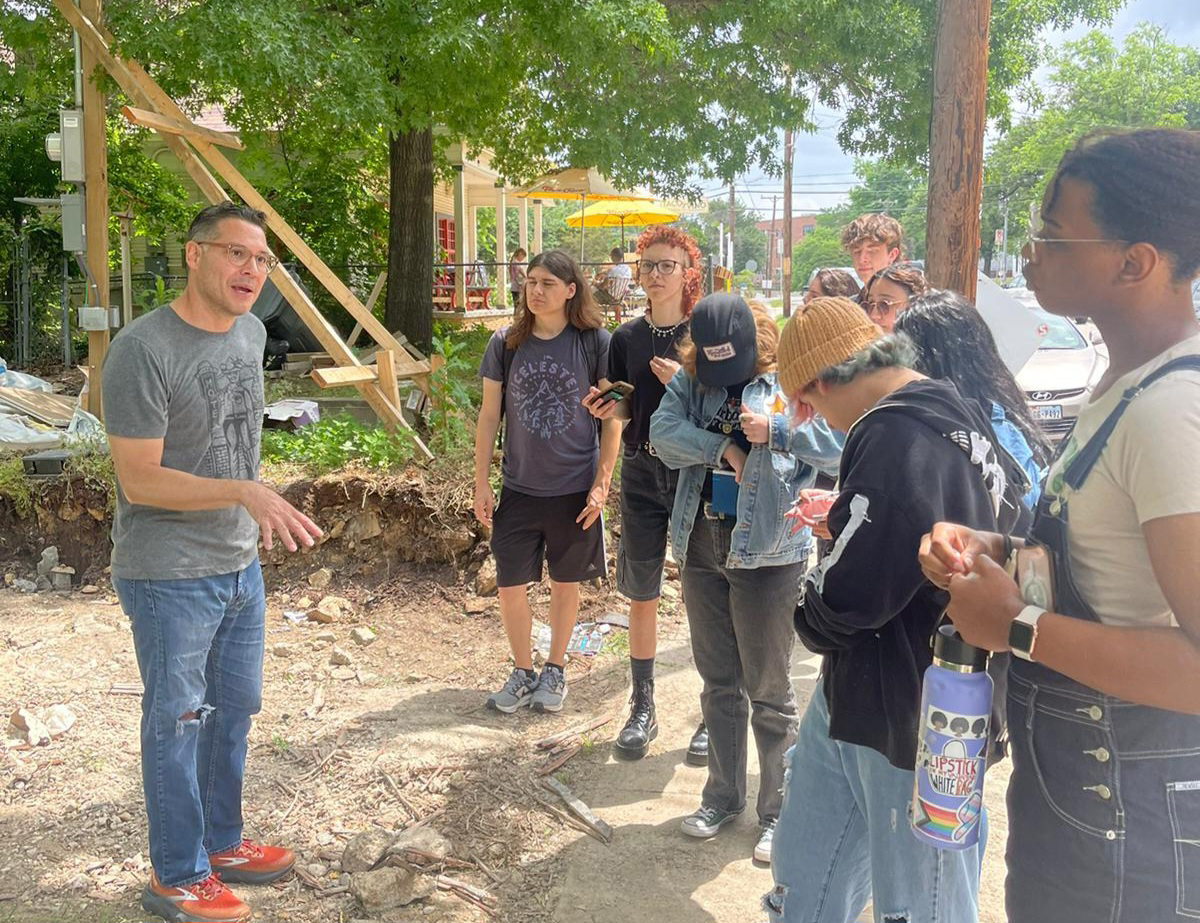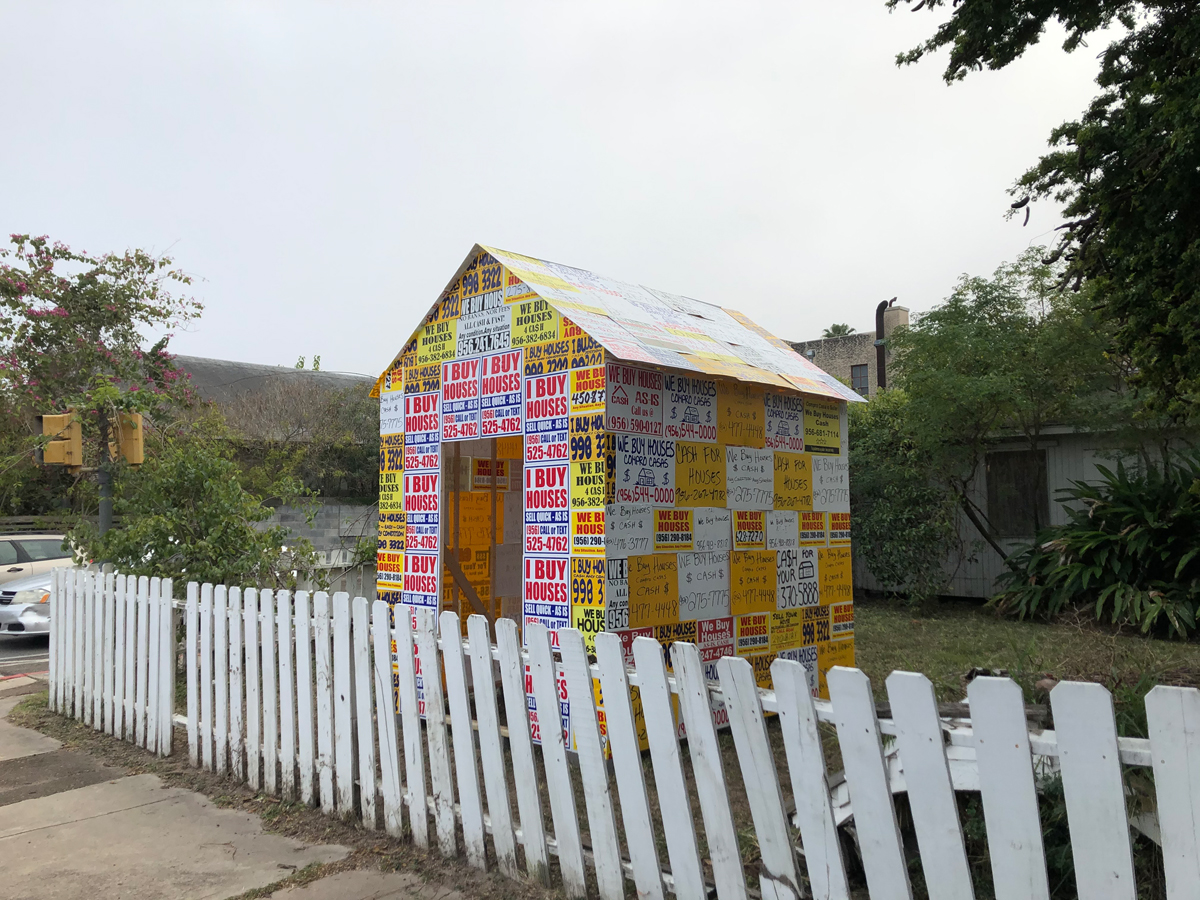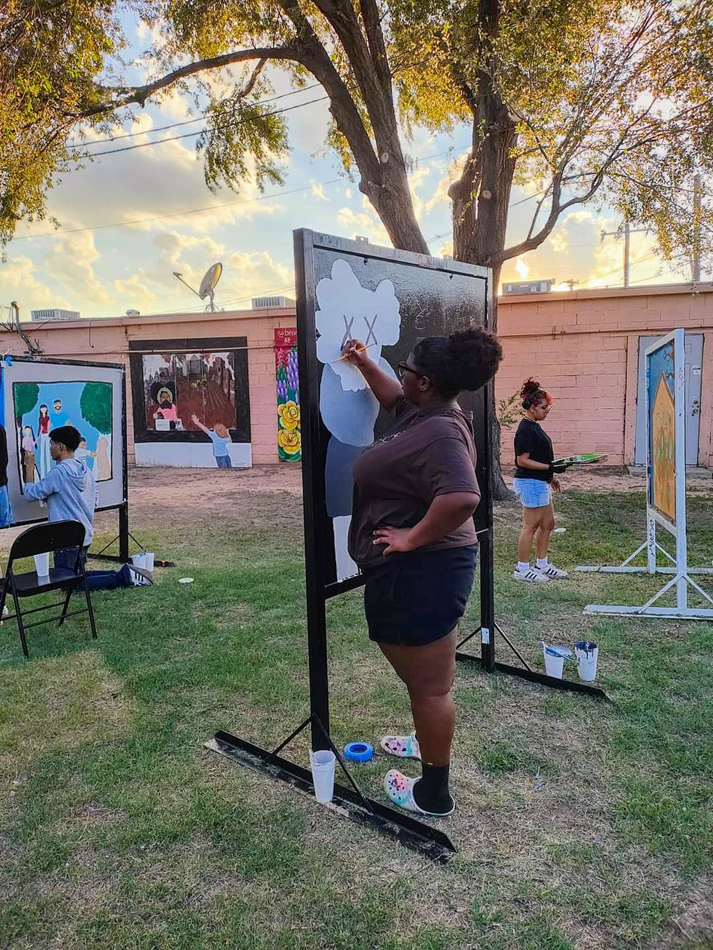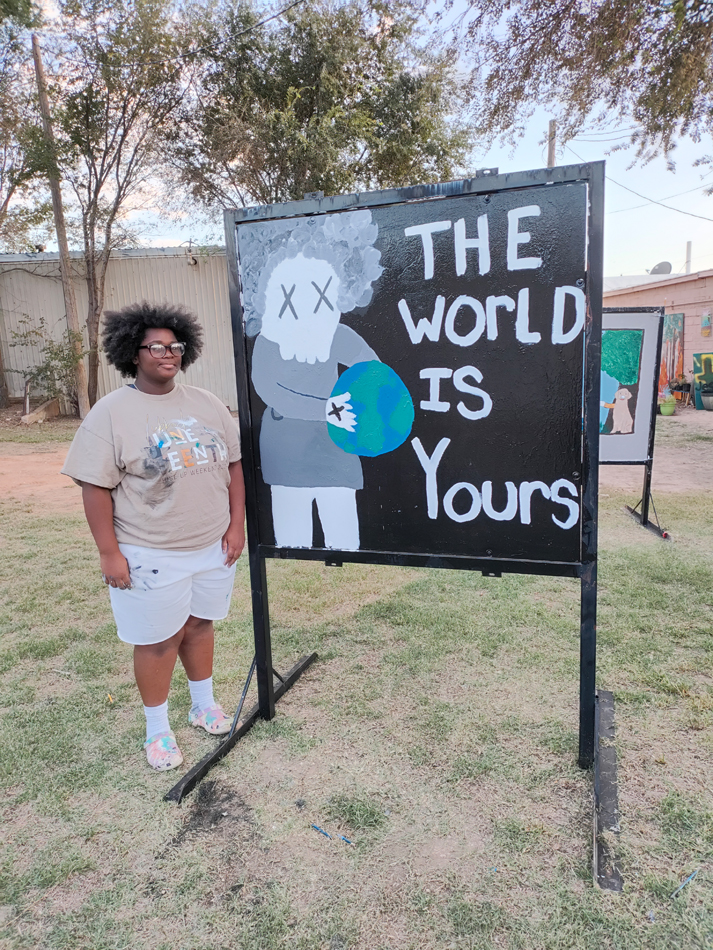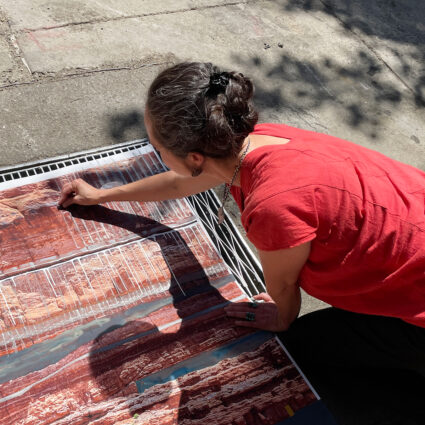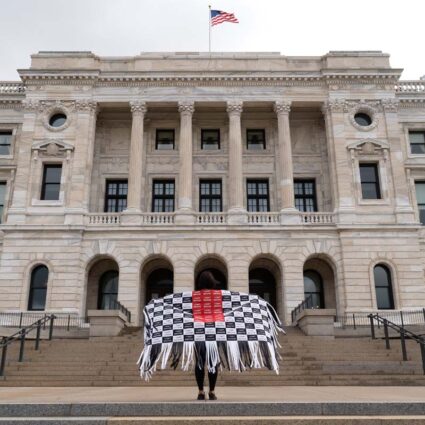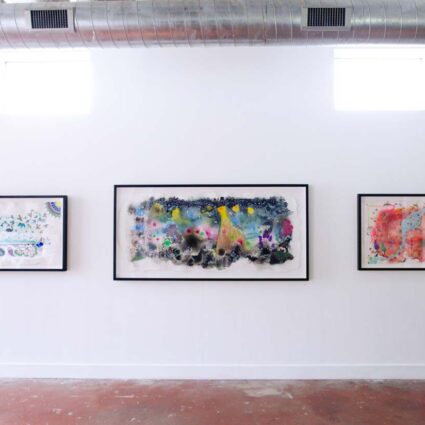Three artists confront the Texas housing crisis with street-level projects using piñatas, murals, gentrification walking tours, and more.
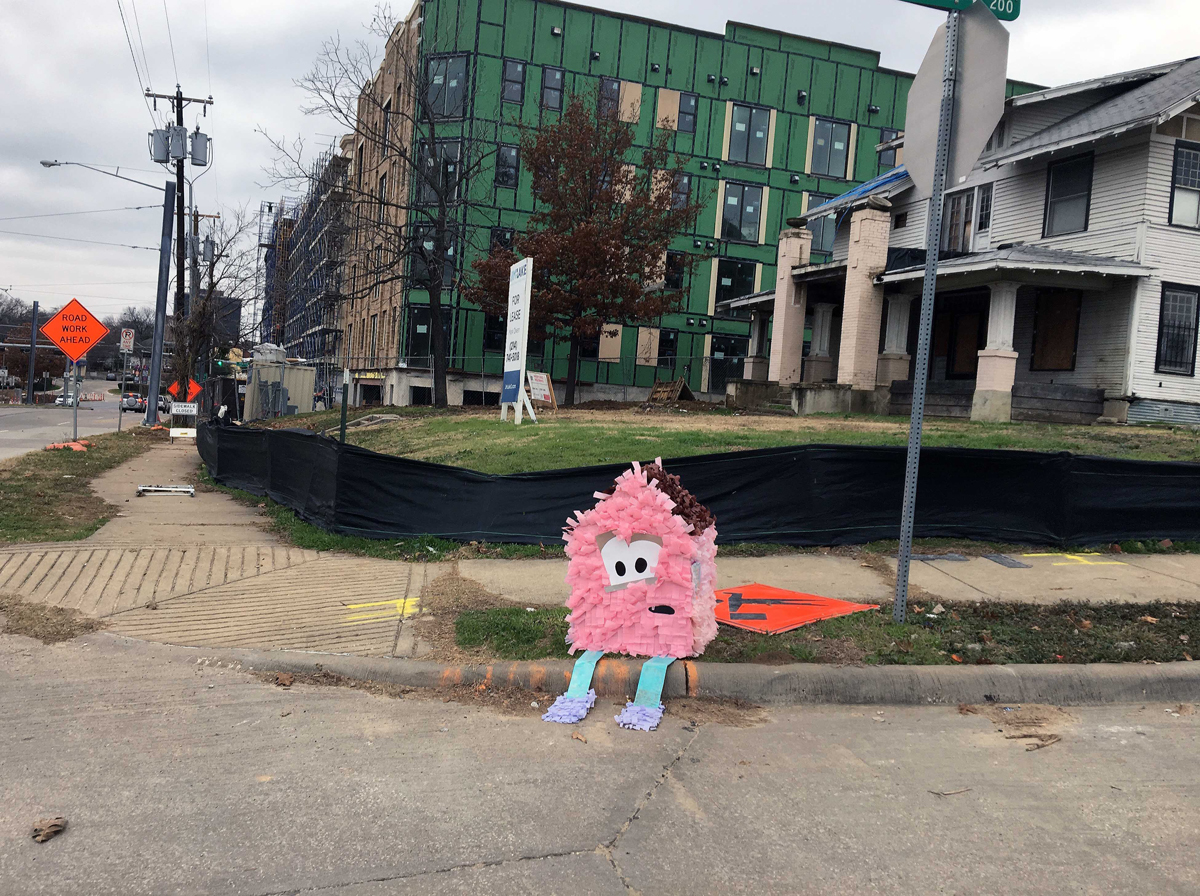
This article is part of our The Hyperlocal series, a continuation of the ideas explored in Southwest Contemporary Vol. 11.
In the winter of 2017, new houses began appearing in the Oak Cliff neighborhood of Dallas. They were small cardboard structures with peaked roofs, covered in vibrant strips of tissue paper. They were piñatas without a party, sitting sadly on curbs, medians, and bus benches. Their thin paper legs dangled from beneath their foundations. In place of windows, large flat eyes stared as though lost in thought.
These houses were part of a guerrilla public art project by Giovanni Valderas. Titled Casitas Tristes or “sad little houses,” the Dallas-born artist placed them to call attention to housing shortages and gentrification in his neighborhood. Valderas has long fought for equitable housing policies in the area through art installations and community activism.
Valderas’s work often incorporates the design language of piñatas, a connection to his Guatemalan and Mexican roots and the predominantly Hispanic communities of Oak Cliff. He placed his casitas near new housing developments in an area where commercial sites and high-end apartments are rapidly replacing single-family housing and displacing residents.
Many artists may not fully realize that their advocacy can be just as impactful as their artwork.
Funny and cute, yet emotionally raw and mysterious, the sculptures were popular sites for selfies and appeared in social media posts. Some were vandalized while others just disappeared. The project succeeded in raising the alarm. “People were eager to take action on the issue of affordable housing in Dallas,” Valderas says, “and I found myself reaching out, receiving emails, building connections, and hosting community education sessions focused on rezoning.” This momentum toward change eventually led to the artist’s competitive bid for Dallas City Council, which fell just short.
Valderas recently collaborated with community organizations to plan a gentrification walking tour of Oak Cliff, offering guests a firsthand view of the housing issues affecting the area. During the neighborhood tours guest speakers pointed out places where homes have been transformed into trendy bohemian cocktail bars and other commercial spaces. The guides also focus on ways that developers seek to capitalize on the urban culture they’re displacing. Valderas says, “Many artists may not fully realize that their advocacy can be just as impactful as their artwork.”
Throughout Texas, artists are finding ways to create and organize in their communities to raise awareness and help fight the growing housing crisis. According to the National Low Income Housing Coalition, the U.S. faces a shortage of 7.1 million rental homes affordable to populations with extremely low incomes. Texas is considered the sixth worst state in the nation for affordable housing. Across the state, people of color face the brunt of the problem.
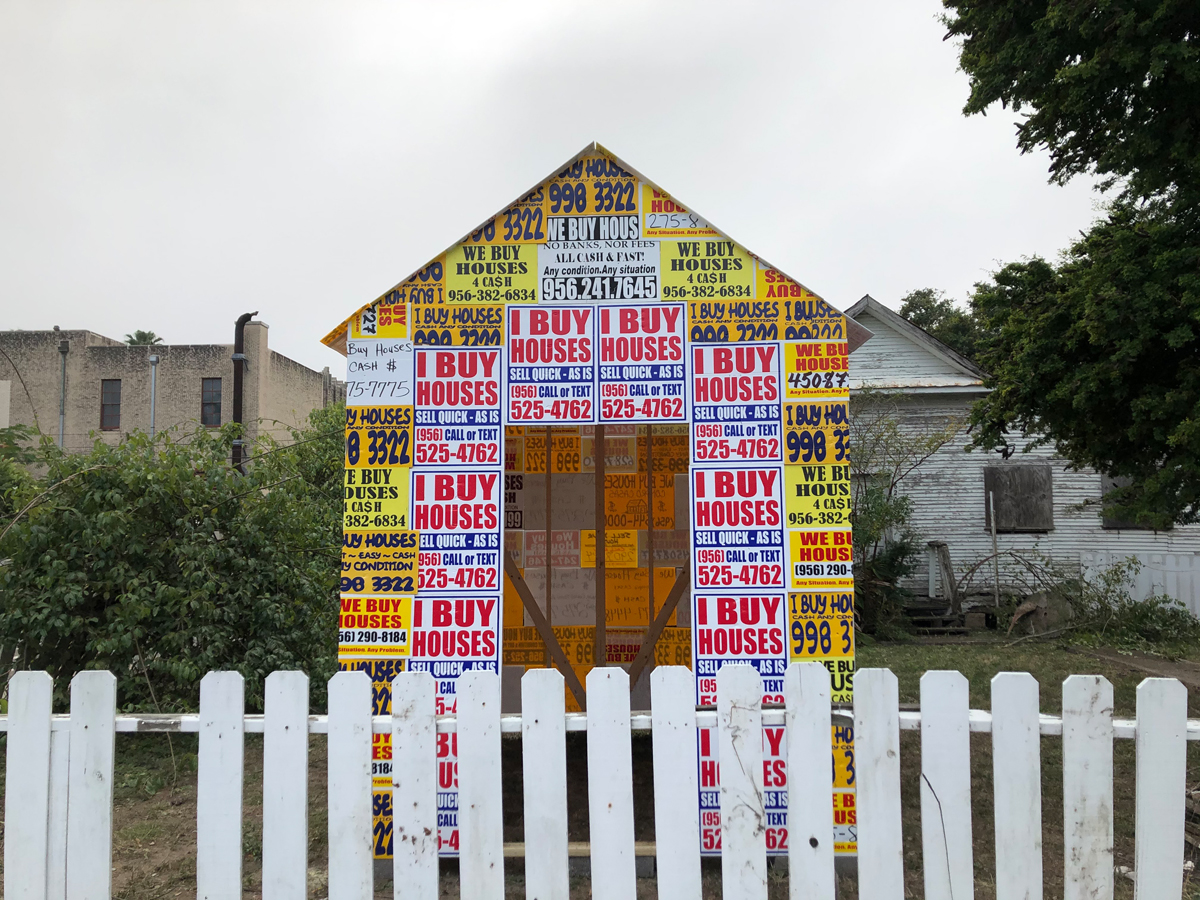
Danielle Demetria East is the founder and executive director of East Lubbock Art House, a gallery and community art space. East Lubbock’s majority Black and Hispanic neighborhoods, cut off from the rest of the city by Interstate 27, bear the scars of historical segregation and city zoning policies. Decades of industrial zoning have left the area with a growing problem of noise and air pollution as well as a lack of bus routes and access to basic needs. Beyond these issues, East says the area also suffers from predatory landlords and neglected rental properties.
As a recipient of the 2023 Race Forward Fellowship, East developed a community project titled What Does Home Mean? She invited local artists and community members to complete movable murals on repurposed commercial real estate signs. Participants were asked to paint what home means to them. The murals are on a tour of vacant commercial lots in the area, currently on view in a lot adjacent to East Lubbock Art House.
In south Texas, Josué Ramirez is a multi-disciplinary artist living and working in the Rio Grande Valley. Ramirez worked for eight years as a policy analyst and regional director for Texas Housers and as a program director for Come Dream Come Build, a nonprofit dedicated to providing affordable housing in the region.
While real estate prices in the Rio Grande Valley are relatively low and home ownership is high, the region still suffers from a lack of affordable housing for the area’s many low-income residents. According to Texas Architect, “approximately 29 percent of the population [of the Valley] lives below the poverty level, a statistic that is double the state’s average.” The COVID pandemic and SpaceX’s move to the area have exacerbated problems within the residential real estate market, which tends to be dominated by cash purchases by outside investors.
The bandit signs flood already concerned and cash-strapped residents with the message that… solutions are available only a phone call away.
Ramirez noticed a telltale signal of the issue in the appearance of so-called “bandit signs” stapled to telephone poles throughout low-income communities, which offer quick cash for houses. According to Ramirez, “the bandit signs flood already concerned and cash-strapped residents with the message that others are in the same situation, and that solutions are available only a phone call away.”
Ramirez has collected the signs and used them as material for a body of work spanning the past five years. In collaboration with CDCB, he created the site-specific installation The Myth of Affordability (2021). Bandit signs gathered from the surrounding neighborhoods cover a wooden frame to create the structure of a house. Its walls and roof bear bold, coercive text reading “We Buy Houses” and “Cash For Your House.” He placed the structure on a commercial lot in downtown Brownsville and later rebuilt it for South Texas College’s Library Art Gallery.
By placing their work among the people most affected, Valderas, East, and Ramirez call attention to housing problems faced by their communities. Ramirez notes that artists can “understand, digest, and explain what their community experiences,” and have a unique opportunity to do something about it. East expressed a similar sentiment, insisting that “to make art properly, it has to be in a community.”
Valderas will present a solo exhibition at Houston’s Box13 Artspace in September 2025. In April 2025, Ramirez will open Ponte Creative Studio and Gallery, an exhibition space in McAllen.
